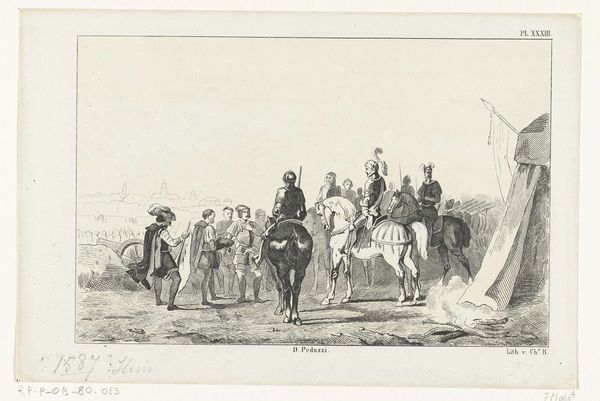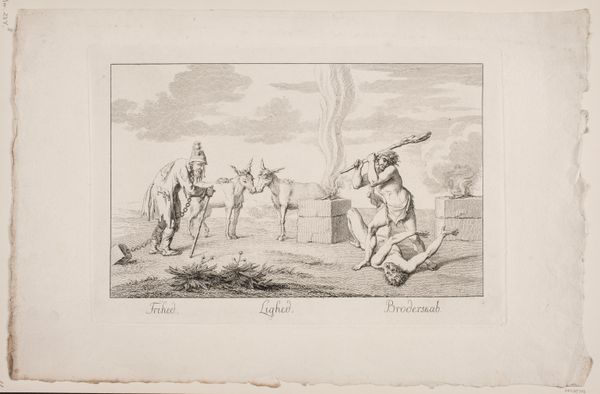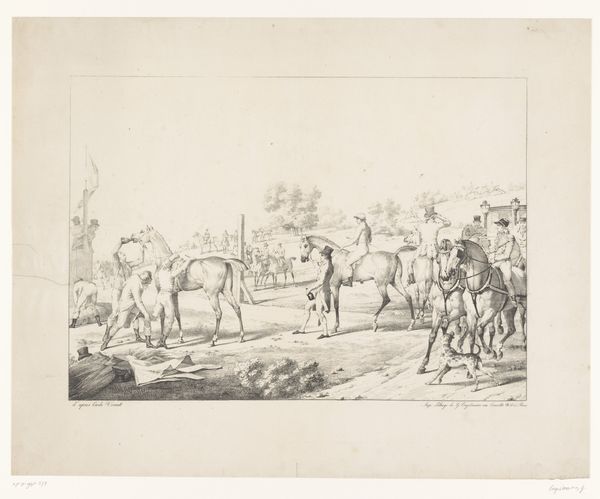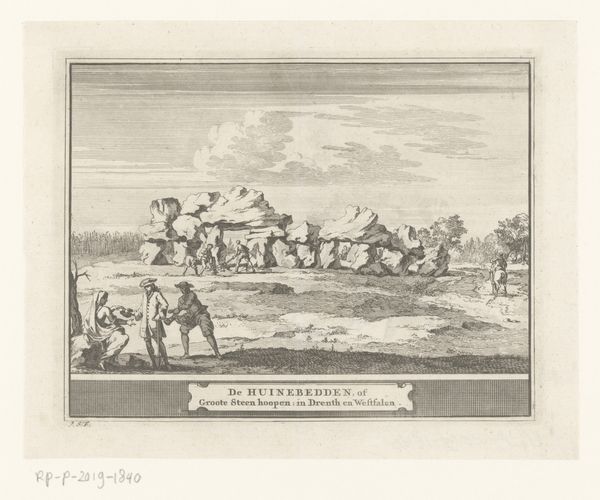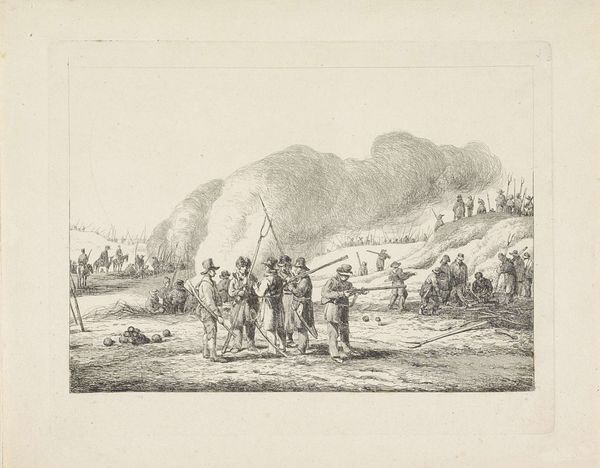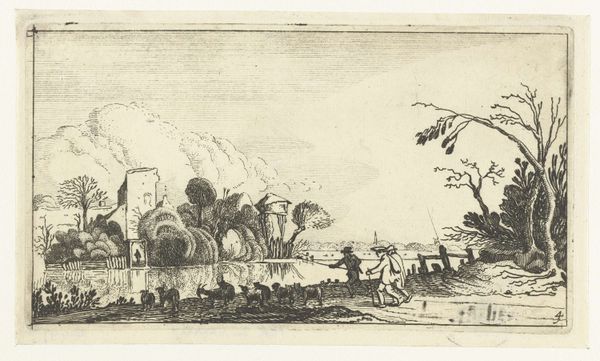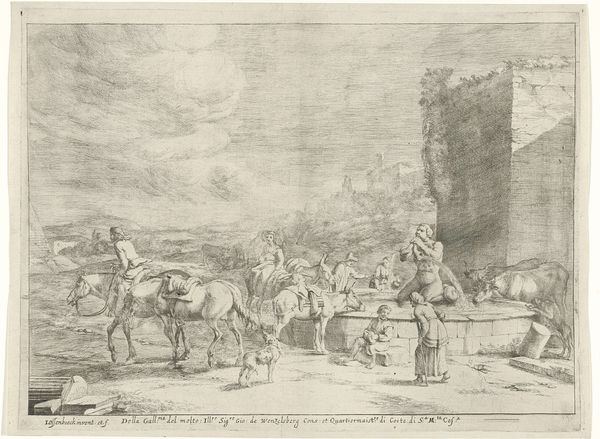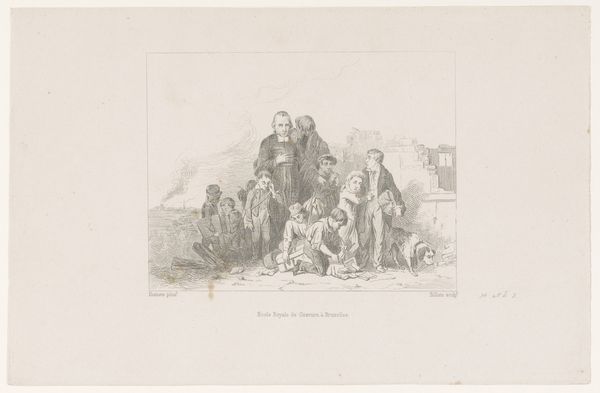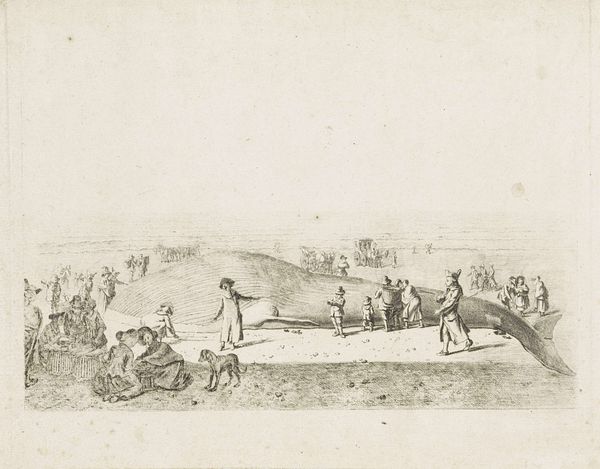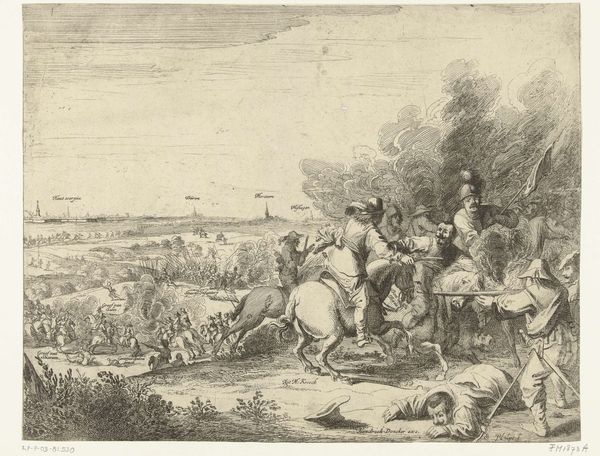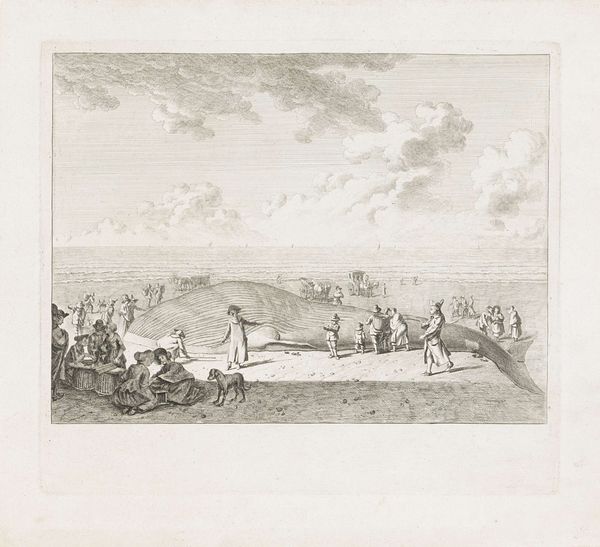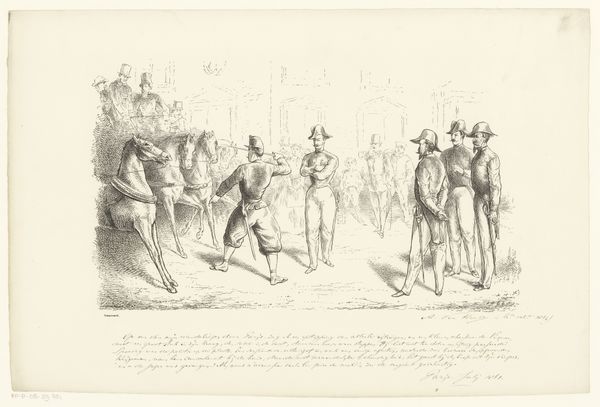
Oprichting van een standbeeld in het kamp van Satory 1865 - 1866
0:00
0:00
drawing, graphite
#
drawing
#
narrative-art
#
pencil sketch
#
old engraving style
#
graphite
#
history-painting
#
academic-art
Dimensions: height 343 mm, width 512 mm
Copyright: Rijks Museum: Open Domain
Curator: This delicate graphite and pencil sketch by Alexander Ver Huell is entitled "Oprichting van een standbeeld in het kamp van Satory," dating from 1865 to 1866. It offers a glimpse into a specific moment, immortalized on paper. Editor: My first impression is one of studied formality. The scene feels posed, almost staged. The stark contrast between the figures in the foreground and the statue suggests a hierarchy of labor and class at play. Curator: Indeed. Ver Huell, working in the academic art style, uses precise linework to depict what appears to be the erection of a monument within a military encampment. The sketch provides us with a window into the symbolic functions of such public displays, reinforcing power and ideology during this period. We must remember the historical and socio-political dimensions. Editor: Absolutely. And focusing on the material aspects, notice the artist's choices— graphite and pencil—they allows for quickness, suggesting it may have been created in situ. What's fascinating is how the immediacy of the medium contrasts with the formality of the subject matter, this orchestrated celebration within the context of military operations. Curator: Consider, too, the intended audience for such imagery. Who was meant to consume this representation of military accomplishment, and what role did these images play in shaping public perceptions of the army? The Rijksmuseum preserves history. Editor: Examining the labor involved here, not just in the literal erection of the statue but in the creation of the image itself. This drawing becomes a material testament to the complex relationship between artistic production, political power, and societal values. Curator: Very well noted. The work reveals not only the dedication of a memorial but provides a glimpse into 19th century sociopolitical constructions. I leave appreciating not just the artistic ability, but the cultural implications inherent in its creation and exhibition. Editor: It highlights the materiality of representation itself. By understanding how it was made, we grasp more profoundly how such symbols perpetuate narratives, or contribute to larger ideologies and social behaviors.
Comments
No comments
Be the first to comment and join the conversation on the ultimate creative platform.
